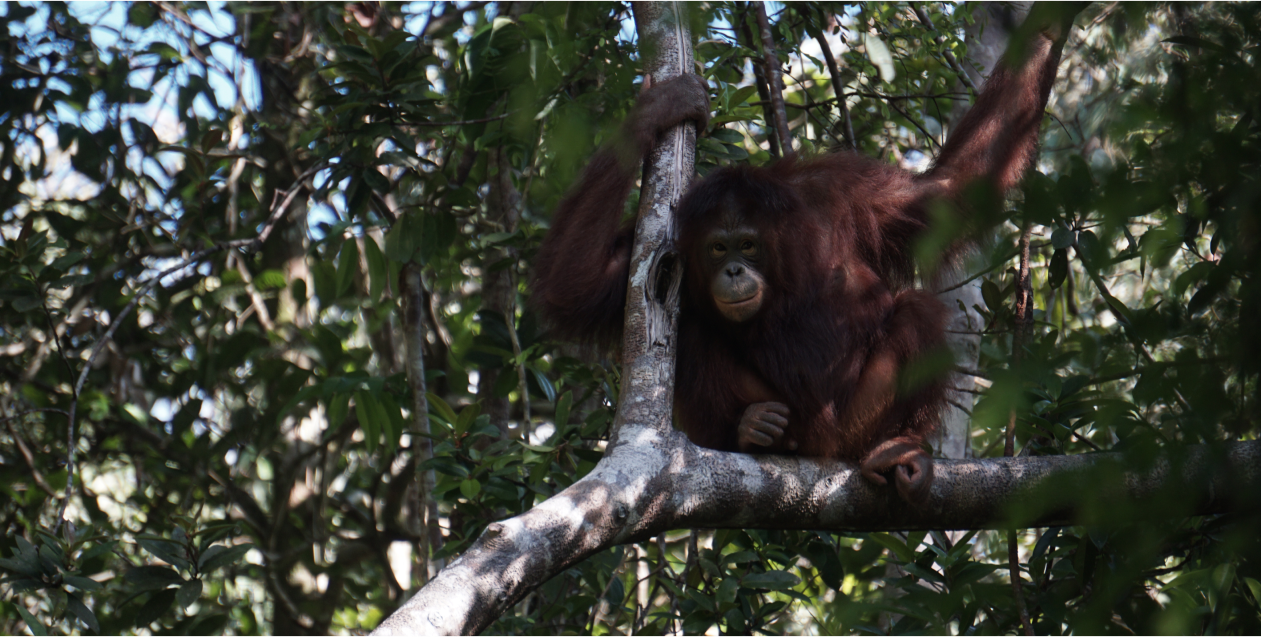
Health Check-Up:
Upon arriving at Sintang Quarantine Center, orangutans
undergo a quarantine period of up to 90 days. During this period, our medical
team conducts thorough health assessments on each orangutan. Sampling is also
performed to determine their sub-species DNA and screen for any potential
diseases. Additionally, our medical experts tailor diets to suit the
orangutans' specific dietary preferences.
Post-evacuation, the orangutans undergo a two-month
isolation and quarantine process before being introduced to the socialization
cage alongside other orangutans. This practice prevents the transmission of
diseases among orangutans. Throughout this phase, comprehensive medical
examinations are carried out to ensure their well-being.

Orangutan's Diet, Behavioral, and Health Rehabilitation Activities:
Did you know that orangutans consume massive amounts of food each day? They eat three times a day, from morning until afternoon. Additionally, they drink milk twice a day and participate in enrichment activities twice daily. Furthermore, we provide vitamins to maintain their health, appetite, and immunity.
After completing the quarantine period, orangutans join their fellow companions in the forest school for behavioral rehabilitation. Here, they engage in various group activities such as foraging for food, building nests, mastering locomotion, and more. This comprehensive training lasts up to a week before another group takes their place in the forest school.
Thank you for your support and donations

Forest School :
The Forest School activity aims to rehabilitate the behavior of orangutans after being kept by humans. Usually, the natural instincts and survival abilities of orangutans have changed or diminished due to prolonged captivity. Therefore, it is crucial to restore their innate skills, enabling them to thrive in the wild in the future.
During their time at the Forest School, orangutans must master several essential skills, including foraging for food, navigating trees, and building nests. Orangutans are deemed ready for release if they meet these criteria, as evaluated by the behavior and ecology team through observational data collected at the Forest School.
At present, there is one Forest School facility, the Jerora Forest School. The Tembak Forest School has been closed, as orangutans from Tembak have been relocated to the Jerora Forest School. This move aligns with SOC's goal of concentrating efforts in Sintang and being closer to the release site.

Sintang Quarantine Center: This facility serves as the initial destination for rescued orangutans, providing essential care and medical attention while ensuring they are free from diseases before further rehabilitation.

A forest school consists of 'Forest Enclosures', which is an area of pristine indigenous forest of around 2 Hectares each, surrounded by an electric fence, where the orangutans can practice all their forest survival skills. The electric fence ensures SOC staff can monitor and guide the orangutans continuously. and is used to prevent them from going out of the forest school area. The voltage of the electric wires will give a shock when touched, however, it is not harmful to their health and will not cause injuries.
The ideal location for a forest enclosure is a natural forest with vegetation similar to their real 'home' – the forest. Forest school is the last step in the rehabilitation process before release. Why is forest school needed? The orangutans need to go to Forest School during the rehabilitation process to gradually become familiar with the natural forest environment and be able to truly master all skills that are needed to survive in the wild.
Skills that the orangutans need to learn during forest school include finding their own food, moving from tree to tree, and making nests. This is carried out under the supervision and guidance of specialized SOC staff that are dedicated to providing the orangutans with the best possible care and support during their rehabilitation process. The caretakers join the orangutans to forest school on a daily basis and stimulate the orangutans to develop their forest skills by climbing in the trees with the babies, or puts food in the trees to motive them to climb. In addition, they collect data about the behavior of the orangutans which is then analyzed by our behavioral scientists and biologist to analyze their readiness for release or continue further rehabilitation approaches.
The best way in which to optimize orangutans forest skills is to have a real forest to practice in. Learning how to find their own edible sources and how to collect food such as honey from a beehive without getting stung. They need to learn how to make nests in different kinds of trees, while taking into consideration various weather conditions, and estimate the strength of branches and distance when climbing through treetops. These are all skills that are difficult to acquire without practice in a forest and a regular enclosure is not sufficient to prepare the orangutans for release.
Aside from the aforementioned importance for survival, being in the forest school also reduces the stress and depression of orangutans compared to conventional enclosures. Furthermore, the forest school enables reduced human contact of caretakers.